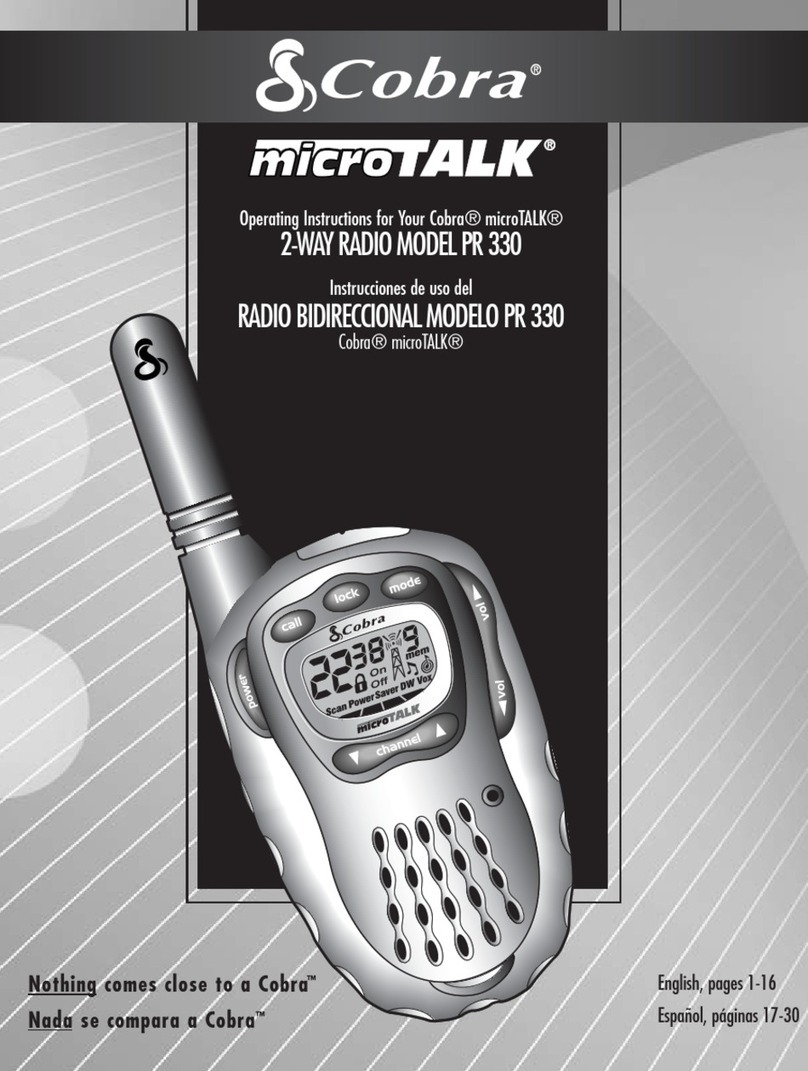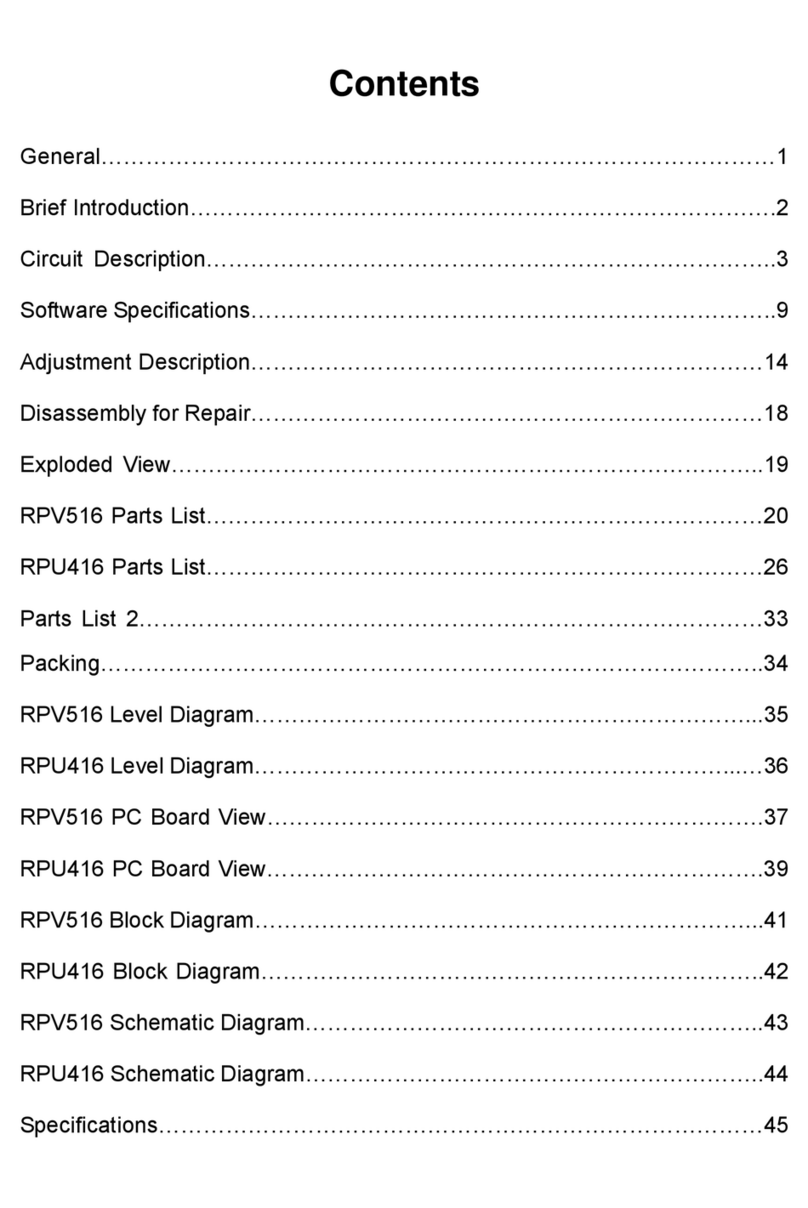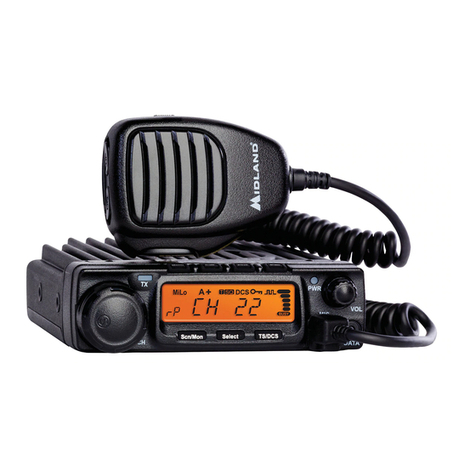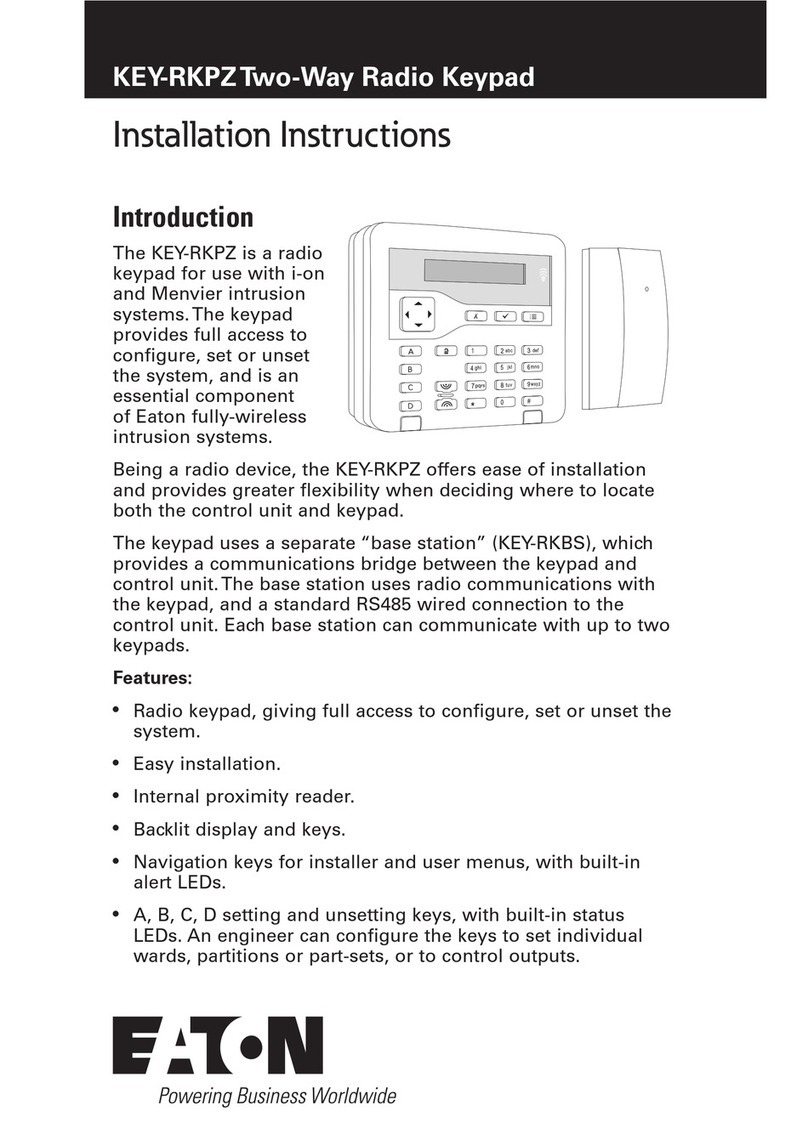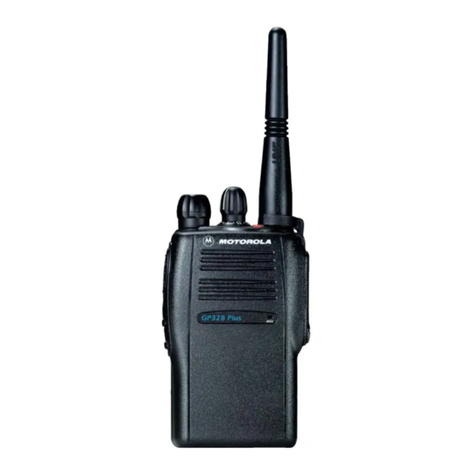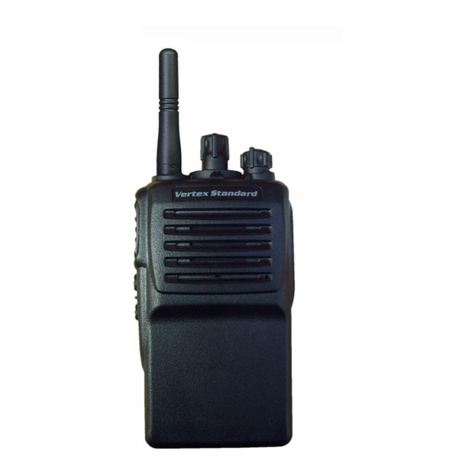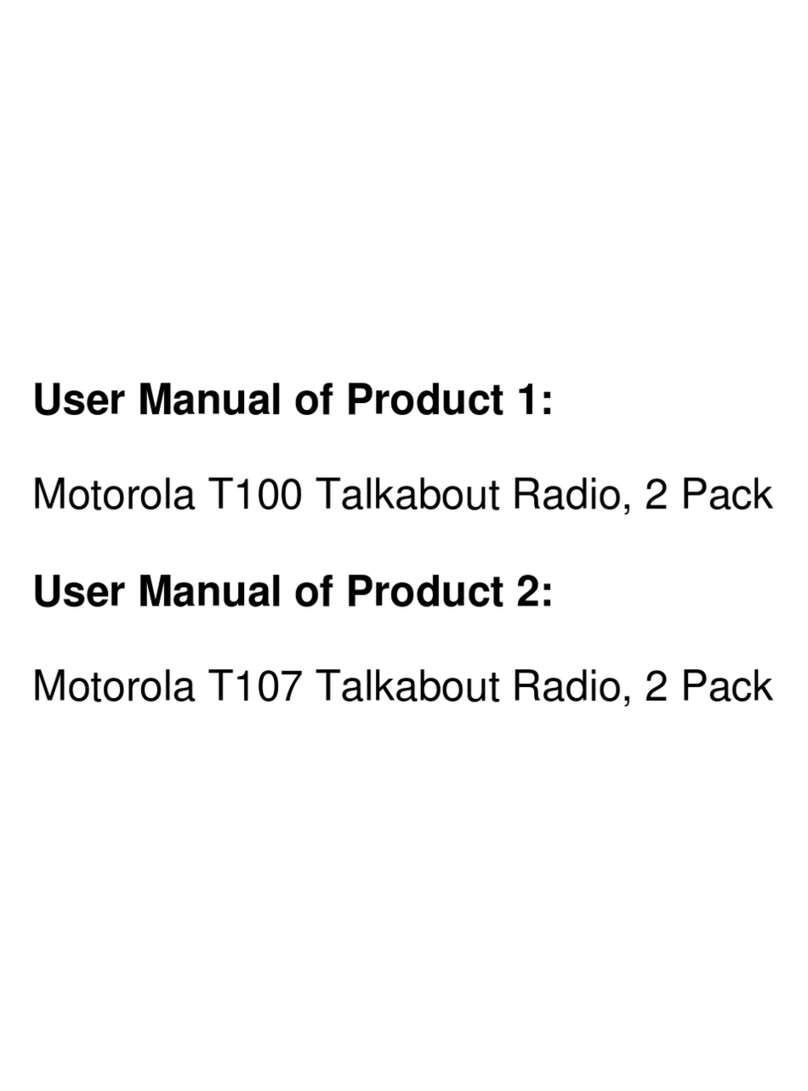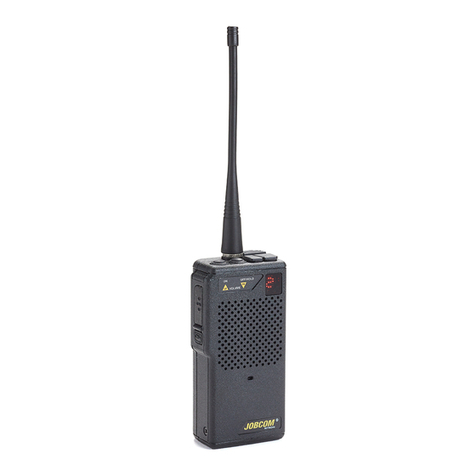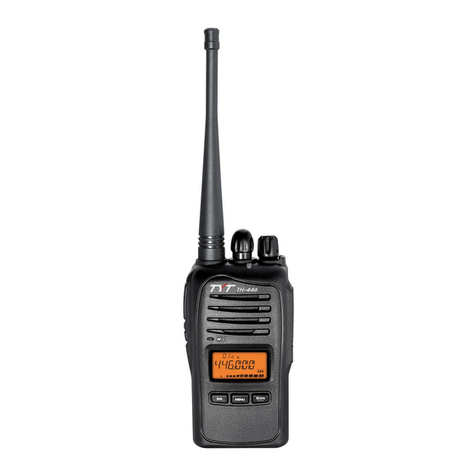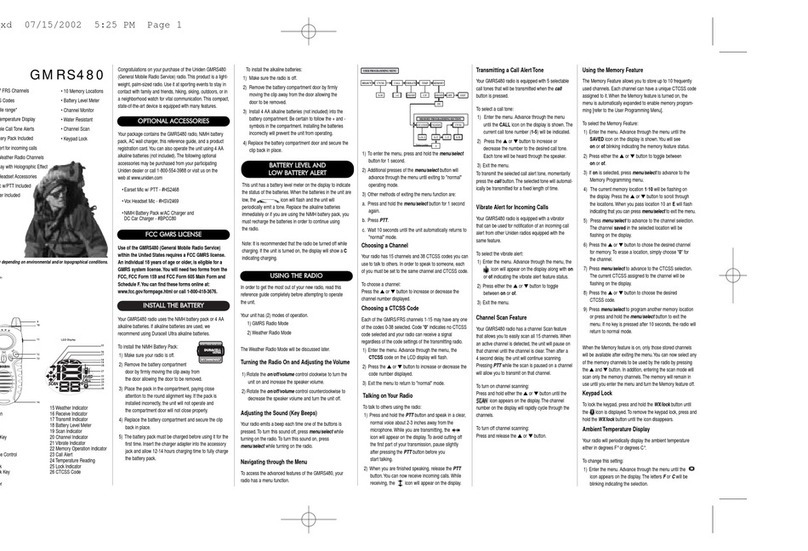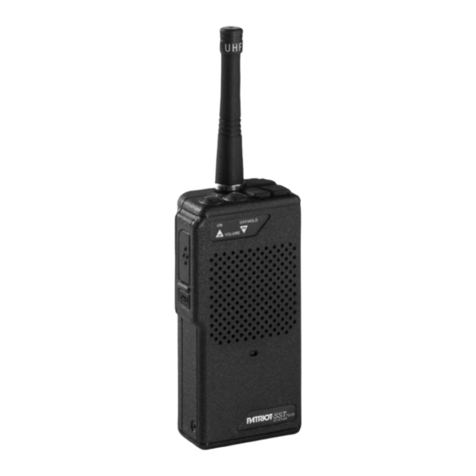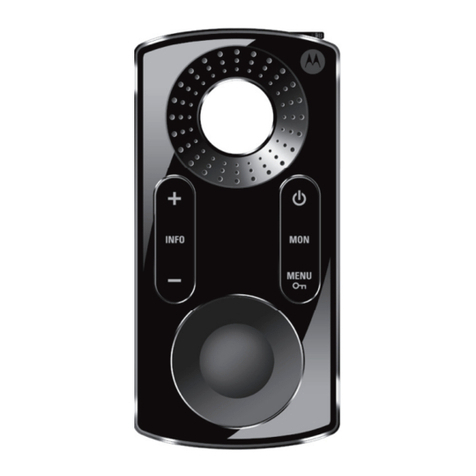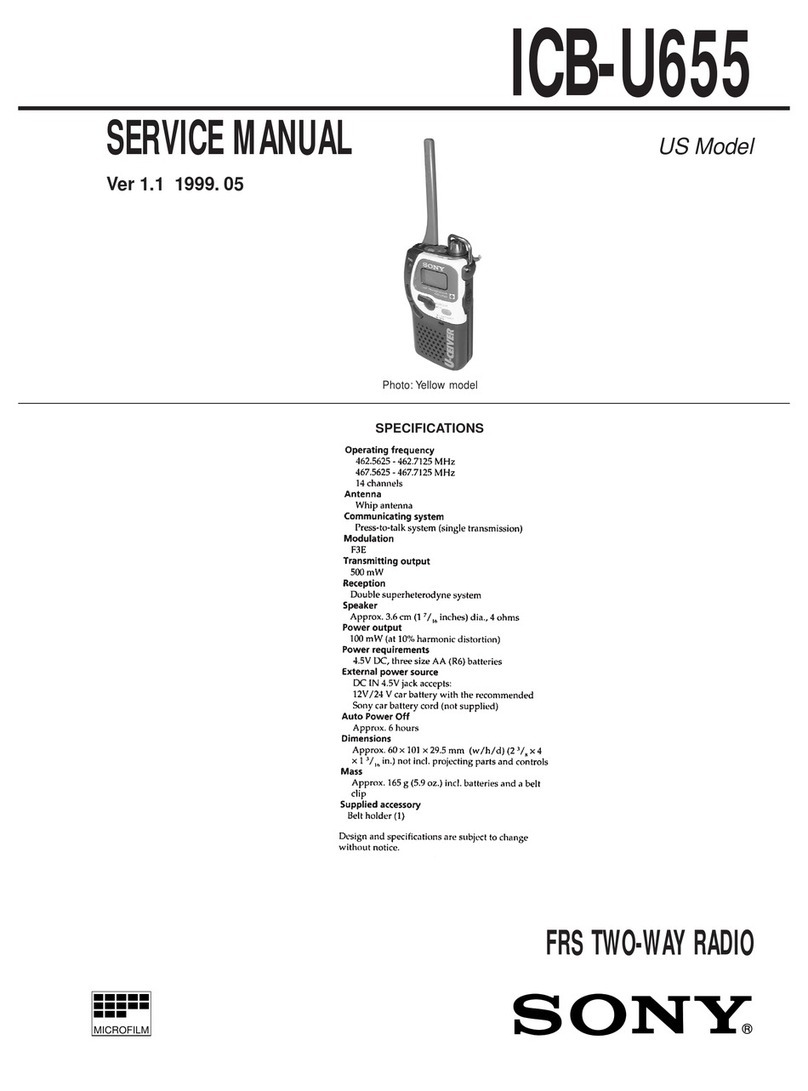Sirio Antenne Quansheng UV-K5 Use and care manual

Quansheng UV-K5 - IJV Firmware
Manual
The Quansheng UV-K5, K5(8), K6 and k5-plus radios have the option of being
upgraded with unocial rmware.
Therefore, I disclaim all liability for transmitting outside the bands allowed by
the manufacturer. What you do with your radio is at your own risk.
These updates are substantial to the point that there was a need to rewrite the
manual, as the menu and functions are dierent.
Please note that the use of this radio requires an HAM radio licence.
Sezioni
1.Ocial website
2.IJV Firmware
3.Features
4.Display
5.Keys
6.Menu
7.Operations
8.Useful links

1. Sito uciale della UV-K5
Click on the model name to nd the ocial Quansheng radio pages
UV-
K5
;
UV-K5(8).
In the nal part, there is the section "
Downloads
" the manual and the
latest ocial rmware.
Otherwise, download it directly here:
⇒
Direct link to V-K5 -
→
k5_Firmware_v2.01.31_publish.
⇒
Direct link to V-K5(8)
→
k6_Firmware_v3.00.15.bin.
⇒
English manual.
2. Il Firmware IJV
Based on the rmware of 1of11, I 0IJV takes this radio to the next
level!

2.1 Download Firmware-IJV
Click on the button to download the .bin le into a folder.
Should there be a problem with this rmware, you can always reload the
ocial one and the radio will be exactly as it was before.
FIRMWARE IJV
2.2 k5prog-win
To load the rmware into the radio you need the software
k5prog
.
+
This programme allows you to save the conguration and calibration
data recorded in the EEPROM. Indeed, is strongly recommended to do so.
It happens that version 1.27 gives problems, so we decided to remove it.
Links of Github website.
K5PROG_WIN-V1.26_OK
2.3 Backup of Calibration and Original Conguration
As mentioned above, it is important to safeguard the original Calibration
and Conguration les:
Last Update : V 2.9

→
Start the radio normally (user mode), connect the cable from the
computer to the radio, start k5prog-win. sing the buttons: "Read
Conguration" and "Read Calibration", save those two les in your folder.
If you need to restore the radio as it was originally, it is not enough to put
back the original rmware, you will also have to load the original
"my_calibration" and "my_cong" les:
→
with the k5prog-win programme via the 'Write Conguration' and
'Write Calibration' buttons.
These les include a hundred or so parameters such as the 3
transmission powers, squelch, RF Gain, start message, 200 channels,
VFO, etc., and are recorded on an external EEPROM memory.
These les are dierent from radio to radio, it is not certain that those
of another are compatible with yours. The calibration is adjusted at the
factory for each individual radio.
2.4 Portable Radio Updater
You can also load the rmware with the ocial Quansheng programme.

Flaw: you are not allow you to save either Conguration or Calibration
from EEPROM.
Download the software
Portable Radio pdater
from the website of
Quansheng or click directly on the button.
PORTABLE RADIO PDATER_V 1.1.12
2.5 Upload the IJV Firmware
. Make sure you have a suciently charged battery.
. Install the cable driver .
Check that it is well recognised by Windows and k5prog-win.
. Plug the cable into the PC, but DO NOT start the software.
. Set the radio to update mode:
While pressing the PTT button, switch on the radio.
The white LED lights up.
. Connect the cable to the radio. The rst time the plugs do not t very well,
you have to push a little to get them all the way in.
. Start the software (or Portable Radio pdater)
k5prog-win .
. Then choose the right COM port in the software and click on 'Connect'.
. Via the software upload the le
k5prog-win,
rmware_IJV_vxxx.bin
previously downloaded.
The white LED blinks.
. At the end of the ashing, switch o the radio and disconnect the cable.
To connect the radio, you will need a Kenwood-type cable:
Kenwood cable purchase link.
Multiple cable purchase link.
This cable ts all types of radios, except
waterproof ones.
→
→

2.6 Adjusting the radio after update
Be careful after installing the new rmware to make these adjustments.
Only if this is a rst-time installation or if you are coming from other
rmware:
. Perform an automatic VFO RESET: start the radio by pressing PTT + EXIT.
. Set menu items as desired.
This is used to correctly set the initial settings for a good radio working.
VFO RESET can also be performed with the RESET menu in the Service Menu.

Transmission in emulation DSB. (Always active, now only disconnected if
you activate the pconverter function).
Preselection for an pconverter with transmission lock.
Increased waiting times during scanning.
Rit & Xit in all modulations.
Stable SSB reception.
Reception gain customisable to your needs.
SATCOM circuit activation with reception boost > +9dB.
FM Broadcast.
VOX
1750 Tone
Compander
Extended reception Frequency range: 15
→
1300MHz. With Rx gap
between 620 and 840MHz.
nlockable limited transmission: NO AIR BAND / NO 27 MHZ.
Rapid Frequency and Tone Search: FC (Frequency Copy) function.
Quick Tone Search.
Quick partial or full memory scan.
SMETER
TX modulation indicator
Selective Calling with reception audio suppression (Code Squelch)
Selective sending DTMF, ZVEI, CCIR.
Scramble.
CW (Continuous Wave) modulation.
Services menu
(ex hidden) (to activate it, switch on the radio while holding
down the PTT and side button 1)
Transmission in DSB (dual SSB).
SATCOM activation.
TX Power adjustment for each of the 3 levels.
Adjustment of each of the 9 Squelch Levels: RSSI, NOISE, GLITCH.
– WHAT'S NOT
SPECTR M (non ci sara’ mai)
Password
NOAA
VOICE
ALARM
Battery voltage and calibration indication.
Blinking LED.
Charging info on SB.

5.1 Funzione dei tasti con pressione breve.
5.2 Funzione dei tasti con pressione lunga.
5. Funzione dei tasti
The keys have dierent functions when pressed, pressed for a long time
or in addition with the key
F
.
Key Function
M
→
Access to radio menu.
EXIT
→
In SCAN : stops the scan and returns to the initial frequency.
→
With the Rit/Xit function active, realigns the Rx to the Tx by
resetting the Step. Resets the last 2 digits of the VFO by aligning it
to the lowest KHz.
PTT
→
In SCAN : stops scanning and leaves the last scanned frequency.
Scan
→
In SCAN : Momentary insertion of a frequency in the Black List.
F
→
Activates secondary functions. The letter F appears in the top
left-hand corner and remains active for 8 seconds.

Key Function
Band
→
AGC shift selection: SLOW / FAST / MAN.
A/B
→
Select either A-band or B-band.
VFO/MR
→
VFO or Memory mode.
FC
→
Fast VFO storage with automatic assignment to rst free slot.
→
Change bandwidth N- N W W+
H/M/L
→
Power selection L M H.
→
Set bank 1 or bank 2 for memory channel. (Same as menu 23 S
ADD1 and 24 S ADD2.)
R
→
In Duplex, inverts freq Rx and freq Tx.
→
In Simplex, activate the Rit/Xit function. (7.8)
→
Select in rotation 4 pre-set steps for the set modulation type.
FM
→
Switch modulation type FM; AM; SSB; CW. With display of STEP.
Scan
→
Scan start which can be of 2 types : Partial or General.
In VFO, SG appears at the top left of the status line.
If you have set bandwidth limits, i.e. you want to do a partial scan,
then you will see SP
Sm1, Sm2, Sm* appear in Memory mode.
If pressed and held in scan, it switches between lists. (7.1)
F
→
Keypad lock, including side keys.

5.3 Tasti associati a F
M
→
Works with AGC MAN, saves the default Gain level. (7.3)
EXIT
→
Resets the selected VFO band back to initial conditions: BW,
modulation, power, step, oset, etc.
The message appears
Clear VFO
.
Key Function
F+
Band
→
Change band to VFO mode.
F+
A/B
→
Switches from dual channel to single channel, on display.
In Single, the VFO is 4-digit, the frequency above Ghz can be set
directly.
VFOs are called VAx or VBx to make it clear which one is active.
(7.4)
F+
VFO/MR
→
Copies the memory frequency to VFO.
The F key must be pressed once and lasts 8 seconds.

F+
FC
→
Frequency Copy (Frequency Meter).
→
When listening to FM music, disable interrupt on Rx. FM
symbol becomes FML (L=Lock).
F+
→
Activates or deactivates Compander (FM only).
F+
H/M/L
→
Completely disable transmission.
The H/M/L power indicators disappear on the screen.
This function remains set even after restarting the radio.
F+
VOX
→
Switch VOX on or o.
F+
R
→
Enable pConverter on the active VFO.
F+
Call
→
Recall Fast Call Channel.
F+
FM
→
Radio FM broadcasting.
F
+ Scan
→
Search-frequency CTC/DCS subtone search function.
F
+
∧
p
→
In FM, in Rx when Rx AGC MAN is selected, Gain increases.
→
In VFO Rx: Rit/Xit, increase frequency in Rx according to lowest
step.
F
+
∨
Down
→
In FM, in Rx when Rx AGC MAN is selected, Gain decreases.
→
In VFO Rx: Rit/Xit, decreases frequency in Rx according to
lowest step.

You can attribute a function to short or long pressure.
Side1S: S is for Single click.
Side1L: L is for Long press.
Side2S
Side2L
Functions Description
NONE None
FLASH LIGHT Switches on the LED.
TX POWER Power selection L M H.
MONITOR Activate monitor, set Squech to 0.
VOX Activates the VOX function.
FM RADIO Activates FM broadcast radio reception.
5.4 Tasti laterali
The two keys are programmable via the services menu 59, 60, 61, 62.
SCAN Start scan. (7.1)
VFO SWAP In VFO, switch from double to single.
SQL + Increase squelch by one level
SQL − Decreases squelch by one level
REGA TEST
REGA ALARM
PTT + Side2
= 1750 Tone
VFO CHANGE Select A-band or B-band = long pressure A/B.
CW CALL CQ

6.1 Menu principale
6. i Menu
M
M
M
EXIT
Menu Default
Firmware IJV
1 SQL 0-9
2 STEP 0,02-1000KHz
4 BW W/N NARROW-, NARROW, WIDE, WIDE+
Adjusts as well as the audio lter as the bandwidth.
lter
N–
1.7kHz 6.25kHz
N
3 kHz 12.5kHz
W
6kHz 25kHz
W+
9kHz 25kHz
5
Tx PWR LOW, MID, HIGH
To access the main menu, press the key .
To enter the selected item with the arrows, then press the key .
To conrm your choice, press the key .
To exit the menu item without conrming, press the key .
3 MODE FM-AM-DSB
Audio BW RF

6
Tx DIR OFF OFF, +, −
|
Direction of frequency oset.
7
Oset 0.000
MHz
0 to 999.9999 MHz
|
Frequency oset.
8
RxCTCS OFF OFF, 67…..250.3Hz
9
TxCTCS OFF OFF, 67 to 250.3Hz
10
Rx DCS OFF OFF, D023N, D025N, 26…….754
11
Tx DCS OFF OFF, D023N, D025N, 26…….754
12
Tx TOT OFF, 30″, 1′ to 15′
|
TX time limit.
13
BusyCL OFF OFF, ON
|
Lock PTT if busy.
14
ChSave CH-001 1 to 200
15
ChName CH-001 1 to 17
16
ChCanc CH-001 1 to 17
17
ChDisp FREQ FREQ, CHANNEL N MBER, NAME, NAME_S FREQ_L,
NAME_L FREQ_S.
In Single mode you can choose the font size for the channel name and its
frequency, L = Large and S = Small.
18
BLTime 1 min OFF, 5sec, 10sec, 20sec, 1min, 3min, RX/TX, ON
RX/TX: Assumes the exact time of transmission or reception. O : Always on.
19
BLMode RX/TX RX/TX, OFF
Determines the event that causes the display to light up.
20
BEEP ON ON, OFF
21
Sc REV CARRIER CARRIER, SEARCH, TIME
How do the scan resumes.
CARRIER: resumes scanning after the signal has disappeared.
SEARCH: stops when it nds a busy channel and stays there.
TIME: Stops on busy channel for 5 sec. then starts again.
22
KeyLok OFF OFF, A TO
|
Keypad lock.
23
S ADD1 ON ON, OFF
Indicates whether the Ch participates in scanning List 1.
24
S ADD2 ON ON, OFF
if Ch participates in the scanning list 2.
25
TailTE OFF ON, OFF
|
Elimination of tail tone.
26
RipTTE OFF OFF, 1*100ms to 10*100ms
27
SCRAMB OFF OFF, 2600 to 3500 Hz
28
Mic dB +15.1dB +1.1dB to +15.1dB
29
MicBAR ON ON, OFF

It inserts a volume level bar in the centre.
Useful for DSB transmission, indeed for optimal modulation it is better not to exceed
half scale.
30
Compnd OFF OFF, TX, RX, RX/TX
Compander: compressor/expander lter, enhances vocals (FM only).
31
VOX OFF OFF, 1 to 10
32
1 Call CH-001 1 to 17
33
ScLisT LIST2 LIST2, LIST1, ALL
|
Channel scan list selection.
34
SList1 CH-256 CH-256
|
Show channels in scan list 1.
35
SList2 CH-256 CH-256
|
Show channels in scan list 2.
36
Own ID 102 102
|
Set a personal ID.
37
PCode 123 123
|
Initial selective code.
38
DWCode 456 456
|
Final selective code.
39
D Lmon OFF OFF, ON
DTMF Local monitor: DTMF sidetone switch. (PTT +
S2 = Tone 1750).
40
D RSP DO DO NOTHING, BOTH. REPLAY, RING
NOTHING
41
D Hold 5s 5s to 60s
42
D PRE 30*10ms
43
D DCD OFF ON, OFF
44
D LIST CALL1
ID:101
45
D LIVE OFF ON, OFF
46
Dig ID OFF
OFF, DTMF CALL ID, DTMF BEGIN, DTMF END, DTMF BEG+END, ZVEI1
BEGIN, ZVEI1 END, ZVEI1 BEG+END, ZVEI2 BEGIN, ZVEI2 END, ZVEI2
BEG+END, CCIR-1F BEGIN, CCIR-1F END, CCIR-1F BEG+END; CCIR-1 BEGIN,
CCIR-1 END, CCIR-1 BEG+END.
CCIR-1F = 50 ms
CCIR-1 = 100 ms
47
DigSRV OFF OFF, Single, Roger, MDC 1200, Apollo Quindar, Digital
Code ID
Acoustic or digital signals sent at the start and/or end of the call. (7.5)
48
Info IJV MOD V.x.x
49
BatSav OFF OFF, 50%, 67%, 75%, 80%
It allows the radio to remain active for only a few moments, thus reducing
consumption.
The cycle consists of 4 phases of 100mS each, saving on how many times
in this cycle the Rx is active or in suspension.
|

The greater the savings, the lower the performance in reception, especially
in scanning.
50
dBm/Sm S/Meter S/Meter, RSSI dB
51
SatCom OFF ON, OFF
Activates the lter change circuit for frequencies after 240 MHz and sets the radio
chip to a +9dB increase in reception, this once activated remains in memory the next
time it is switched on. Similar to a preamplier, to be used in exceptional cases of
low signal because it can cause distortion in listening, switch it o when not needed.
The message RESET SATCOM appears.
52
pConv OFF OFF, 50, 125
It prepares the radio to work with a Transverter for HF.
It oset itself to 50 or 125 Mhz from the display reading and disables Tx on that
frequency.
It only works for bands 1 and 2. Then choose how high to scale then do F+8, 'Up' will
appear below the frequencies.
53
Preset 26-30, 70-75, 75-80, AIR 1, AIR 2, VHF 1, VHF 2, SEA,
SERV, HF, LPD, PMR
It sets up reception and scanner lters with search limits per selected band.
Pressing the M button stores the bands and returns directly to the main VFO screen.
AIR 1: 118-126, AIR 2: 126-137, VHF 1: 142-148, VHF 2: 150-155, SEA: 155-163, SERV: 162-
174, UHF: 430-433, LPD: 433-436, PMR: 446-447
54
Rx AGC MAN, FAST, SLOW
Auto Gain Control: in MA ual, the sensitivity of the RF Gain can be changed by
pressing the F+ button
o F+ .
FAST or SLOW: determines how quickly or slowly the AGC recovers gain after
attenuating a strong signal. (7.3)
In Rx, it appears to the left of the centre line:
M+0, FST or SLW.
55
Tx VFO SAME SAME VFO, VFO A, VFO B
VFO
In Dual RX, choose the TX channel. Same as RX, A or B.
If set to VFO A or B, 'Xb' appears on the top line of the screen.
(Cross-Band Receiving/Manual Transmission)
56
DualRX ON ON, OFF
(Dual Watch)
∧∨

6.2 Menu servizi
To activate it, switch on the radio while holding down the PTT and side button 1
Menu Default
Firmware IJV
57
RESET VFO, ALL
VFO only resets menu parameters, ALL also clears memories.
58
PonMSG MESSAGE NONE, FW MOD, MESSAGE, QRZ.
Info showed when starting the radio. Firmware name; custom message;
nothing.
59
QRZ
60
Side1S SQL + FM RADIO, VFO CHANGE, VFO SWAP, SQL +, SQL -, REGA
TEST, REGA ALARM, NONE, FLASH LIGHT, TX POWER,
MONITOR, SCAN, VOX.
61
Side1L MONITOR FM RADIO, VFO CHANGE, VFO SWAP, SQL +, SQL -, REGA
TEST, REGA ALARM, NONE, FLASH LIGHT, TX POWER,
MONITOR, SCAN, VOX.
62
Side2S SQL - FM RADIO, VFO CHANGE, VFO SWAP, SQL +, SQL -, REGA
TEST, REGA ALARM, NONE, FLASH LIGHT, TX POWER,
MONITOR, SCAN, VOX.
63
Side2L FLASH FM RADIO, VFO CHANGE, VFO SWAP, SQL +, SQL -, REGA
LIGHT TEST, REGA ALARM, NONE, FLASH LIGHT, TX POWER,
MONITOR, SCAN, VOX.
Assigns a function to the side buttons below the PTT. S= Single click, L= Long press.
64
F Lock OFF OFF, FCC, CE, GB, 430, 438
It blocks certain functions depending on the legislation of the country you are in.
65
Txp EN ON ON, OFF
OFF totally blocks the TX, the radio becomes just a receiver.
66
FrqCal
Fine calibration of the radio oscillator frequency. Requires the use of a
frequency meter.
67
TxpCal
Adjusts Tx power for the 3 levels L, M, H.
First choose the desired power on any freq, then menu PwrCal and adjust the
power. ( (7.6)
68
SqlGli
Calibration of Glitch Squelch Parameter.
69
SqlNoi
Calibration of oise Squelch Parameter.
70
SqlRss
Calibration of RSSI Squelch Parameter.
This manual suits for next models
2
Table of contents



